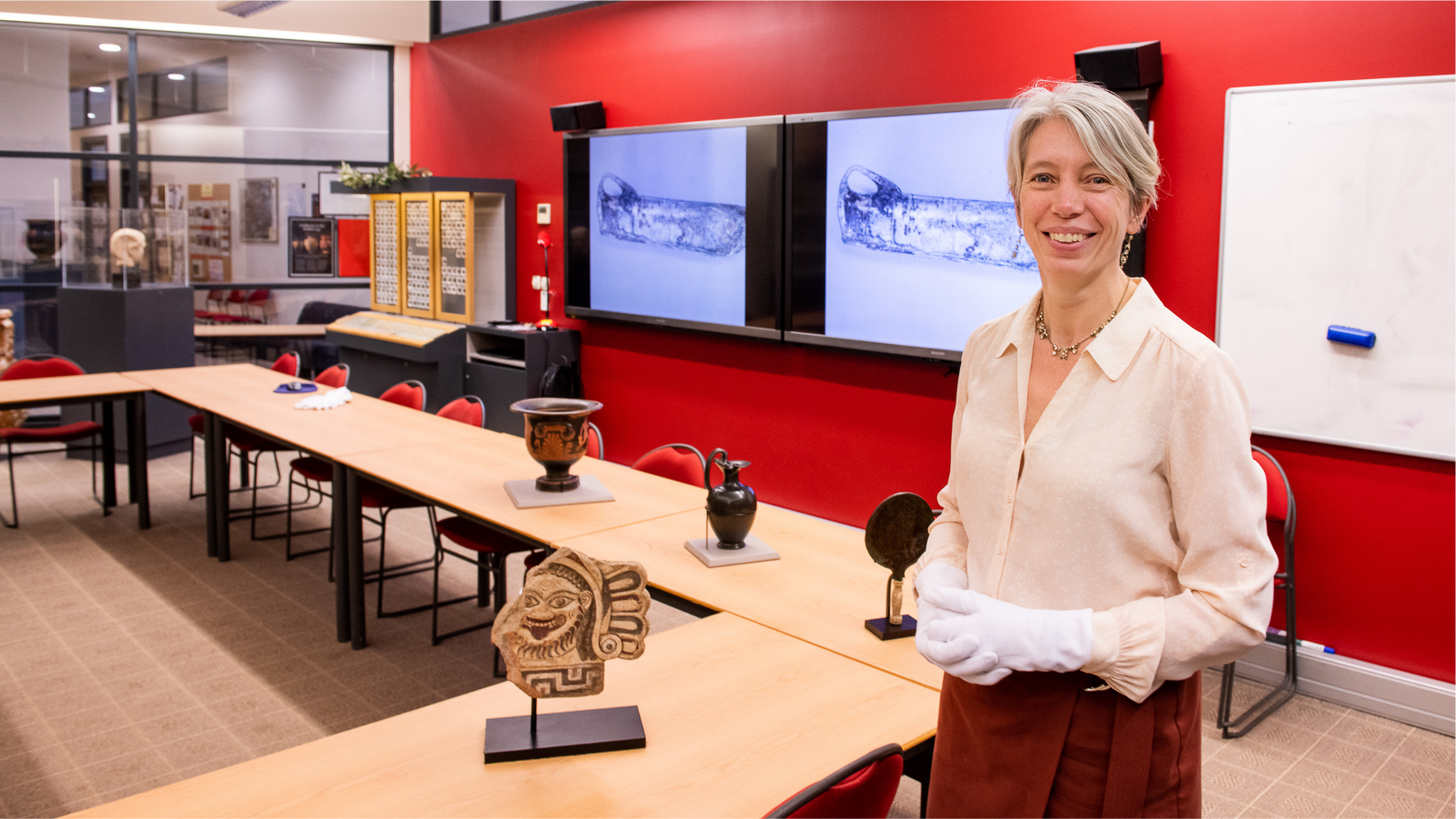
The collection is a mix of Greek and Roman materials, running from the Bronze Age (3000–1200BC) to the later Roman Period (200-400AD), and is representative of a wider range of different objects and periods. It went online earlier this year with the help of intern and 2019 Master’s of Museum and Heritage Studies student Rachel Mildenhall and Image Services coordinator Kerie McCombe, just in time for students to use it during lockdown.
“Our collection is one of the most physically accessible, yet earthquake safe, collections in New Zealand—something that isn’t easy to achieve. It is set up in such a way that students can pull things out of the cases and handle them—a lot are on plinths that slide out,” notes Dr Burton, who is also Associate Dean (Students) for the Faculty of Humanities and Social Sciences.
“We worked with conservators Te Mahi when we initially designed the display, and they have made it incredibly accessible, for example with a coin cabinet that allows us to see both sides of each coin. They were very inventive.”
While the University isn’t unique in having a Classics collection, it is the only University in New Zealand with a collection housed in the University grounds—within the department in which it is taught.
“We use the collection in a variety of different ways—to teach about artistic development, different techniques and approaches to decorating vases. We also use it in social history classes. What is represented on vases, as well as items that we have like ships’ nails, strigils (used to remove sweat after exercise), mirrors, tell us a great deal about the daily life as it is lived, and ancient values.
“We also use it to teach myth—we have representations of a fight between a Greek and an Amazon, we have Athena, we have a Gorgon. Myth was a tool to think about society and culture—which myths they chose and where they put them tells us a lot about how they thought.”
Dr Burton’s favourite item in the collection is a kylix (shallow drinking vessel) which dates to 550BC. “It’s beautifully made, very fine, and very light. It’s an elegant shape and lovely to hold and handle. It tells us a lot about the culture that used it—for instance the characters that look like writing are actually nonsense, showing that while literacy was widespread and fashionable at that time, the person who created this wasn’t literate—but neither was the person who purchased it.
“That’s what I love about this collection. There are a lot of things that can be unpacked from a single item.”
More information about the Museum
The collection is now available for public access on Thirdlight
